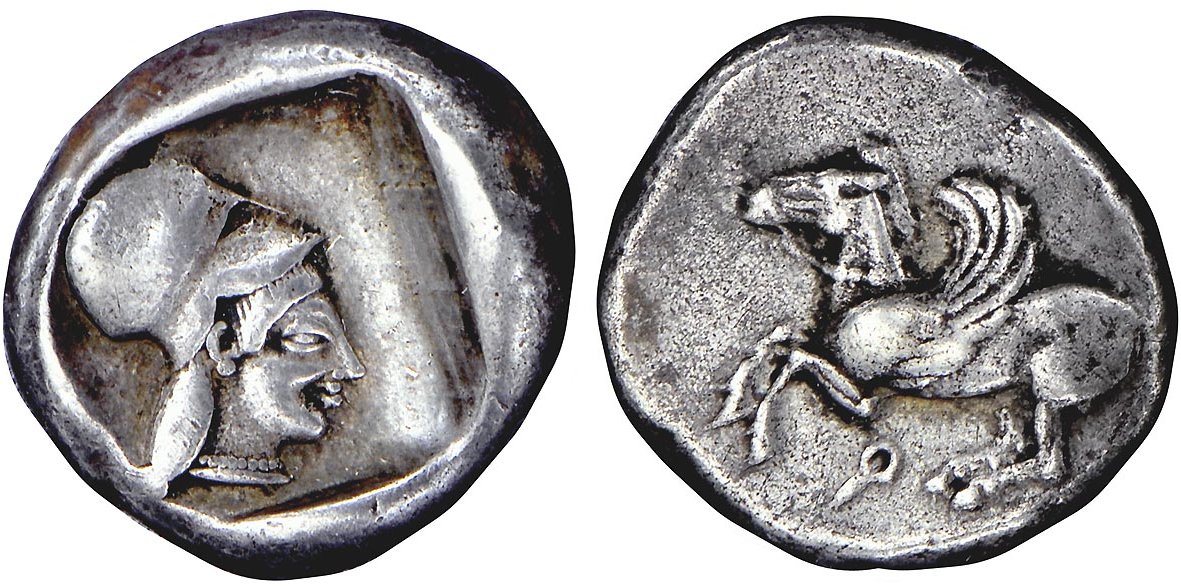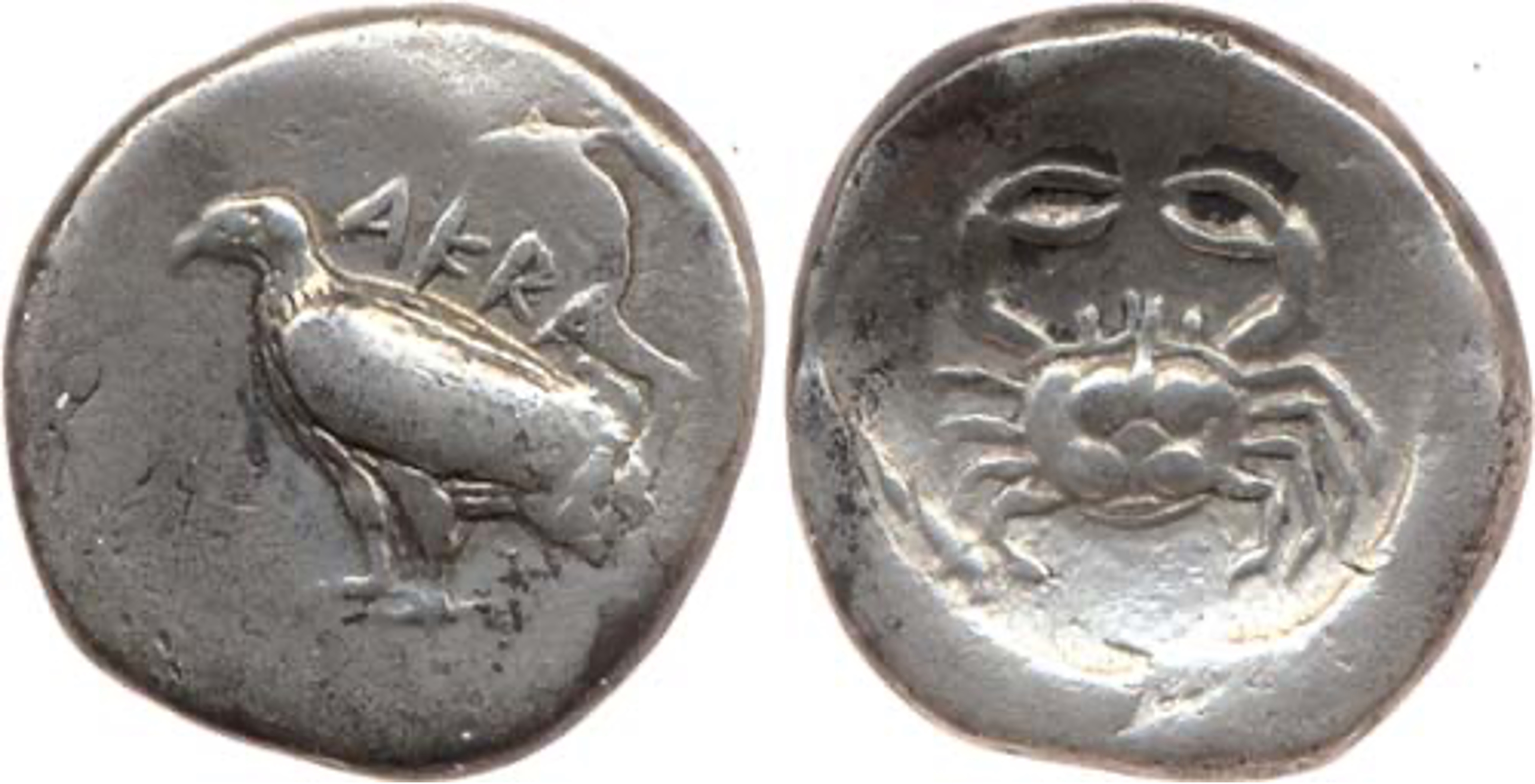1695 - Agrigentum (didrachm eagle/crab) over Corinth (Athena/Pegasus) (Spink, 3014, Oct. 2004, 4)
From SILVER
500 BCE - 480 BCEΑΚPΑ
Images
Overstruck variety

Corinth Athena incuse square.jpeg [1]
Location/history
| Sale(s)Sale(s) ᵖ: | Spink, 3014, 8 Oct. 2004, 4 | |
Overstriking coin
Description
| ObverseInscription or printing placed on the obverse.: | ΑΚPΑ (Greek) Eagle left. | ReverseInscription or printing placed on the reverse.: | Crab within incuse circle. |
Mint and issuing power
| MintIdentifies the place of manufacture or issue of a numismatic object.: | Agrigentum | Ancient regionAncient region. | Sicily | Modern countryModern country: Italy | AuthorityIdentifies the issuing power. The authority can be "pretended" when the name or the portrait of X is on the coin but he/she was not the issuing power. It can also be "uncertain" when there is no mention of X on the coin but he/she was the issuing power according to the historical sources: |
Chronology
| FromIdentifies the initial date in a range assigned in a numismatic context. 500 BCE toIdentifies the final date in a range assigned in a numismatic context.. 480 BCE | Archaic until 480 BC |
Physical description
| MetalThe physical material (usually metal) from which an object is made.: Silver |
WeightWeight of the numismatic object (in grams). in grams: 8.418.41 g <br />8,410 mg <br /> | DenominationTerm indicating the value of a numismatic object. Examples: tetradrachm, chalkous, denarius.: didrachm |
|
| StandardStandard.: Attic | |||
References
| Coin referenceReference of the Coin: | Coin series referenceReference to coin series study: | SNG ANS 3 Sicily1SNG ANS 3 Sicily, n° 926, Jenkins 19702Jenkins 1970, Group II c, HGC 23HGC 2, n° 93 | |
| Coin series web referenceCoin series web references: | |||
Overstruck type
Description
| ObverseInscription or printing placed on the obverse.: | Pegasus flying. | ReverseInscription or printing placed on the reverse.: | Head of Athena, wearing a Corinthian helmet, within incuse square. |
Mint and issuing power
| MintIdentifies the place of manufacture or issue of a numismatic object. ᵖ: | Corinth | Ancient regionAncient region. ᵖ | Peloponnesus | Modern countryModern country: Greece | AuthorityIdentifies the authority in whose name (explicitly or implicitly) a numismatic object was issued. ᵖ: |
Chronology
| FromIdentifies the initial date in a range assigned in a numismatic context. 510 BCE toIdentifies the final date in a range assigned in a numismatic context.. 480 BCE | Archaic until 480 BC |
Physical description
| DenominationTerm indicating the value of a numismatic object. Examples: tetradrachm, chalkous, denarius. ᵖ: | didrachm |
References
| Coin type referenceReference to coin series study ᵖ: | Ravel 19364Ravel 1936, Group II |
Additional data
| Frequency of overstrikesFrequency of overstrikes: | rare and spread | Level of confidenceLevel of confidence of the identification: | strong |
| RemarksRemarks: | "overstruck; the undertype on the obverse is Pegasos flying left as on transitional Corinthian staters, while the traces of undertype on the reverse are less clear-cut" | ||
References
- ^ SNG ANS 3 Sicily
- ^ Jenkins, Gilbert Kenneth (1970), The Coinage of Gela, AMUGS II, 2 vol., Berlin
- ^ Hoover, Oliver D. (2012), The Handbook of Greek Coinage Series. 2. Handbook of the Coins of Sicily (Including Lipara). Civic, Royal, Siculo-Punic, and Romano-Sicilian Issues. Sixth to First Centuries BC, Lancaster-London, 489 p.
- ^ Ravel, Oscar E (1936), Les "Poulains" de Corinthe : monographie des statères corinthiens. Tome I: de 650 à 415 J.-C., Basel.
